Imagine yourself in your local supermarket, doing your usual grocery run. In aisle after aisle, countless brands vie for your dollars and attention. Colgate, Crest and Aquafresh toothpaste. Smucker’s, Welch’s and Dickinson’s strawberry jam. Coke, Pepsi and RC Cola soft drinks.
Like most consumers, you probably prefer one over another in dozens of categories that are collectively called consumer packaged goods. This class of goods includes things with a relatively short life cycle such as food, drinks, cosmetics and cleaning products. These items are used and replaced quickly, compared with durable goods like appliances and cars. True product innovations in this realm are rare, and actual distinctions between brands are typically slim. Yet reaching for your go-tos is almost automatic, and economists have long tried to determine why.
It’s especially curious because, as research has repeatedly shown, consumers in blind taste tests routinely fail to pick out their preferred brands. And they will happily purchase name-brand products such as Advil even when identical generic products sit right next to them on the shelf for a fraction of the cost.
People’s brand preferences are deep-seated and long-lasting. It’s not as simple as one brand being most popular across the board, though. Different brands dominate market shares in different geographic regions. In some cases, these market shares have generally been considered to remain stable over remarkably long periods of time, including those of Coca-Cola, Wrigley chewing gum and Gillette razors. Among food and beverage brands, nearly 50 percent of those that were dominant in the US in 1923 were still among the top five in 1997.
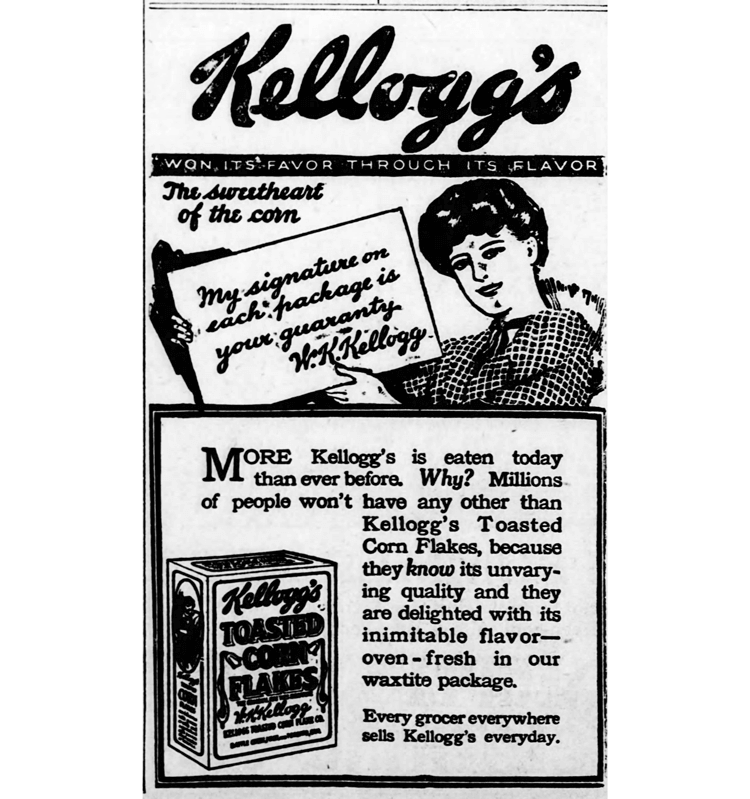
What’s in a brand? Brands are a relatively recent innovation, emerging in the early twentieth century. Over time, their value has shifted from a product-focused statement of origin to something that is valued in and of itself.
CREDIT: FLICKR
Precisely why people form lasting brand attachments to more or less indistinguishable products is a challenging question, says Stanford marketing professor Bart Bronnenberg. Psychology, geography, childhood experiences and advertising all exert some influences, concluded a 2017 paper in the Annual Review of Economics by Bronnenberg and Jean-Pierre Dubé, a marketing professor at the University of Chicago Booth School of Business. But, they note, finding definitive answers is made harder by the fact that long-term, multi-decade purchasing data for individuals and households are difficult or impossible to obtain.
“We’re just scratching the surface here,” Bronnenberg says. “I think the exact mechanism through which this stickiness comes about is still unknown, but people are researching it, and we have several good answers.”
And while researchers have gained insight into how brand loyalties are formed and persist in the brick-and-mortar marketplace, the shopping landscape is changing rapidly. How consumer buying habits may change — and brand loyalties along with them — in the age of online shopping may pose even trickier questions.
Here are some of the best explanations researchers have for why you reach again and again for Crest, Smucker’s or Tide. And how those habits may change as shopping gets smarter and more connected.
“Consuming” the brand
Brands were originally used as symbols of quality. They communicated to consumers that this cow was raised by a reputable farmer, that this beer was brewed with untainted water, or that this loaf of bread was free from sawdust and other fillers.
“A century ago, as branding was really emerging, pundits tended to think of the brand as a means to identify the supplier of a commodity,” Dubé says. “But we have subsequently learned that consumers derive other benefits from the brand.”
In a classic study conducted in 1964, hundreds of participants were asked to rate different kinds of beer. With labels on the beers, the participants rated their go-to brand higher than the others. But when the brews were unlabeled, participants showed no preference. In other words, the brand alone made the beer seem to taste better. “It’s as if the brand is a complement to the product itself,” Bronnenberg says. “It adds value, or adds to the enjoyment.”
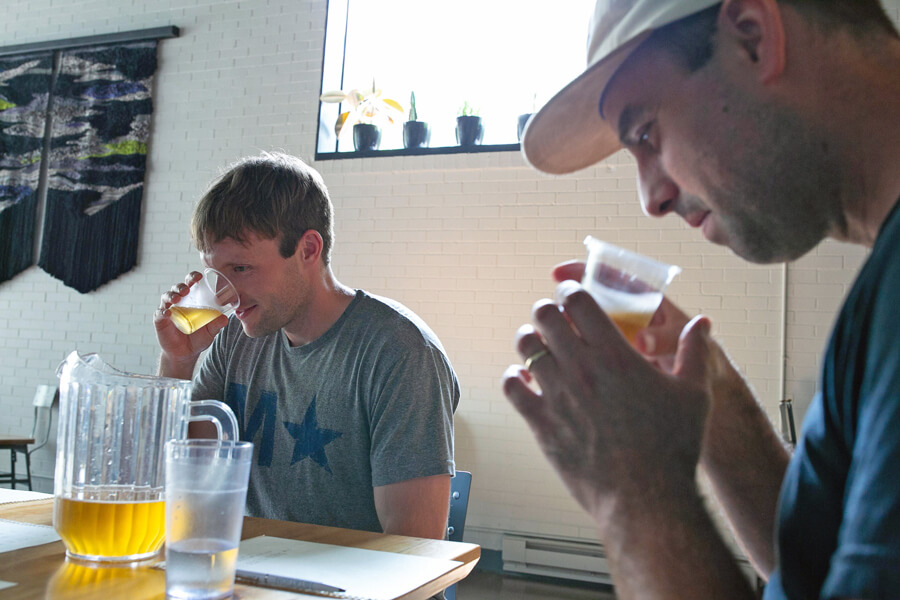
Many people think they can tell the difference between Coke and Pepsi, or Budweiser and Miller, but studies show that most can’t distinguish similar products when labels are hidden. A classic 1964 study showed this effect with beers.
CREDIT: TRIBUNE CONTENT AGENCY LLC / ALAMY STOCK PHOTO
This added value can extend from psychological effects to physiological ones, too. For instance, in a 2013 study, the antihistamine Claritin proved more effective at relieving symptoms in participants who took the drug and were then shown a Claritin advertisement, versus those who took Claritin and were shown a Zyrtec commercial. Here, Dubé says, is evidence that “buying the brand makes me ‘feel better.’ I literally consume the brand itself.”
The “cognitive miser”
In other cases, brand selection may merely be a matter of convenience. When you’re in the grocery store searching for all of the items on your shopping list, the kids are begging for lollipops and you’re trying to plan dinner ideas for the upcoming week, how much mental bandwidth do you have to spare?
People are, as psychologists say, “cognitive misers.” We tend to think and solve problems in the simplest possible ways. To help make choices, we form heuristics, or mental shortcuts.
“In the grocery store, you're making choices for sometimes 40 or 50 categories, each of which have like 40 or 50 alternatives,” Bronnenberg says. “It’s impossible to do this in a timely fashion unless you have these shortcuts like brands.” When it comes to choosing toilet paper or bottled water, the quickest way to make a decision might simply be to buy the brand you recognize, or the one you purchased last time. Here, Dubé says, the brand acts as a beacon, steering you toward things you’ve bought before.
And one snap decision may well turn into a behavioral pattern. As long as the product doesn’t let you down, that’s probably enough to earn your loyalty. Or, more accurately, you can’t be bothered to not be loyal. “You tried a brand and it worked,” Dubé says. “Why waste time finding something else?”
Home is where the brand is
Another possibility, raised in a 2009 study by Bronnenberg, Dubé and Sanjay Dhar, is that brand preference can stem from where you live. The team studied which brands dominate market shares in different regions, tracing each brand’s city of origin and the timing of its entry into other markets.
Bronnenberg and colleagues found that the dominant brand in a given region often reflects which brand hit the shelves there first, even if that occurred more than a century ago. In fact, a brand’s market share in its city of origin is approximately 20 percent higher than in a city 2,500 miles away.
And while this advantage erodes with distance from the city of origin, it does so only gradually. For example, Portlanders prefer Folgers coffee, first sold just down the coast in San Francisco in 1872, while Clevelanders prefer Maxwell House, which launched in nearby Nashville in 1892. This pattern held true across dozens of different categories of consumer packaged goods, from ketchup and mustard to bagels and breakfast sausages.
Geography, and familiarity, affect brand loyalty. Folgers, a product of San Francisco that initially expanded in the West and Midwest, tends to have larger market shares in those cities where the brand hit stores first. Maxwell House, which originated in Nashville, does better in eastern cities where it has a longer history.
But what about someone who moves from a Maxwell House town to a Folgers town? A follow-up study in 2012, by Bronnenberg, Dubé and Matthew Gentzkow, revealed how brand preferences evolve when people migrate. That work also explored the “stickiness” of these preferences throughout a consumer’s lifetime.
“Moving from LA to New York, for instance, creates a shock on your shopping environment, on your media environment, on what gets a lot of shelf space and what gets a little shelf space,” Bronnenberg says. “And so you quickly change some of your preferences.” About 60 percent of participants’ preferences quickly shifted toward items more popular in their new home. But the other 40 percent of preferences remained consistent with participants’ cities or states of origin, even for people who had moved decades ago. And while that 40 percent erodes over time, Bronnenberg says, it does so “very, very slowly.”
The particular preferences people stand by tend to be very idiosyncratic, Bronnenberg notes. “It’s not that all consumers stick with their coffee preferences but migrate their preferences for sugar or pasta sauce,” he says. “I think it’s that you have some favorite things that you yourself find important, and you stick with those preferences, and others you don’t.” A certain kind of pancake mix may be nearer and dearer to your heart than, say, the kind of syrup you squirt on top of it.
All in the family
That people can hold onto their original brand preferences for decades illustrates the importance of branding, Bronnenberg says. “If these effects are so sticky, if you could get people to buy your brand early on in their life, that turns out to be quite valuable.”
There is evidence that some brand preferences may develop in early childhood and last into adulthood.
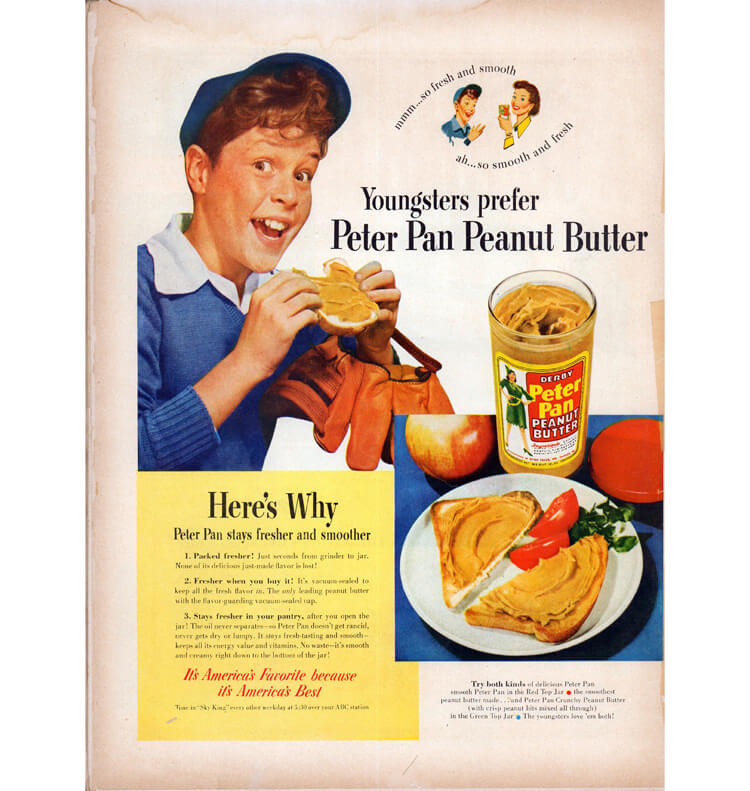
First encounters can influence people’s thinking about entire categories of goods — so that, for instance, all facial tissue is thought of as Kleenex — and create long-lasting loyalties. The peanut butter brand you ate as a child, for example, may be your preferred brand into adulthood. This gives brands an incentive to advertise to children.
CREDIT: SENSEIALAN / FLICKR
“If you get consumers who haven't consumed yet, their preference is like a blank canvas,” Bronnenberg says. “As a child, the first thing you got exposed to when you didn’t know any of the brands was this brand, and that occupies your mind space about this category.” Did you grow up in a house where Tide was always next to the washing machine, and not Gain? Were your PB&Js made with Welch’s jam and never Smucker’s? If so, you might simply come to associate the whole category — laundry detergent or jam — with the brand you encountered first.
The preferences of parents, too, often have an outsize impact on the preferences of their children, even later in life. One study found a strong correlation between the brand of cars purchased by parents and those purchased by their adult children. While cars are very different than breakfast cereals, this evidence suggests that brand preferences can be inherited, or at least trickle down the family tree.
Hard learning and expertise
In some cases, our own brains can get in the way of understanding that there’s no difference in the objective quality between brands.
In 2008, Stijn van Osselaer, a consumer psychologist at Cornell University, documented a phenomenon he calls “blocking.” If you first learn about a brand like Tylenol before learning about its active ingredient, acetaminophen, van Osselaer says, your knowledge of the brand effectively blocks your understanding of the active ingredient. What happens, in short, is that you associate the outcome (no more headache) with the brand (Tylenol), which makes it harder to learn that it’s actually the acetaminophen doing the work.

Unlike most people, healthcare workers are much more likely to buy a cheaper generic version of a drug, such as acetaminophen, over a brand-name like Tylenol. Their experience lets them see through the “brand signal,” researchers say.
CREDIT: EDITORIAL IMAGE, LLC / ALAMY STOCK PHOTO
This difficulty of learning is exacerbated by the fact that consumers rarely perform side-by-side tests of name-brand and generic products, van Osselaer says. Also, many products’ effects are long-term and therefore hard to ascertain, such as the cavity protection touted by toothpaste. As a result, we may have unjustifiably strong feelings in favor of a brand-name item based on emotions or experience, rather than information. And even if you suspect there’s little difference in quality between a name brand and a generic, just a sliver of uncertainty can be enough to convince you to pay the premium.
“Let’s say you think generic acetaminophen is just as good as Tylenol, but you’re not quite 100 percent sure,” van Osselaer says. “You have a throbbing headache, or your baby is crying and feverish. Do you run the risk of trying the generic?”
Probably not. In fact, consumer behavior research has shown that people rarely even go so far as to conduct in-store price comparisons. In a study from 1984, consumer psychologist Wayne Hoyer found that only 8 percent of consumers in a supermarket detergent aisle even looked at a price tag. A mere 3 percent of shoppers looked at more than one. And they pay the price for that. In a 2015 study, Bronnenberg and Dubé analyzed nearly 38,000 stores across more than 100 chains and found that American consumers would save $44 billion per year if they chose the store brand whenever possible.
That same study found that people in health-related occupations are substantially more likely to purchase a generic health-related product than the average consumer. They know it’s no less effective. Likewise, people with food-related jobs are more likely to buy unbranded pantry staples like sugar, salt and flour. Their own experience has shown them that these ingredients work just as well.
“Being an expert allows you to distinguish between true product characteristics and the brand signal,” Bronnenberg says. That expertise, however, doesn’t necessarily cross domains: The pharmacist isn’t any more likely to buy supermarket house-brand flour, and the chef isn’t more likely to buy CVS painkillers.
Advertising effect
The thrill of advertising is trying to change all that. Through ads, brands can try to persuade consumers to form or change a product preference. Sometimes the target is practical: Ads simply inform potential buyers about the existence, price or location of a product. But some ads go for something more, seeking to layer the product with additional value such as social prestige.
For big purchases like cars or smartphones, where innovation is rapid and status reigns supreme, it’s easy to see the value of advertising to persuade consumers to be loyalists, inform them of new features and tap into their egos. But what about toilet paper or breakfast cereal? Most advertising for these types of consumer packaged goods centers on basic features — it’s soft, for example, or it’s part of a balanced breakfast — that all competitors share. And it’s hard to see Charmin or Special K ever becoming status symbols.
Here, advertising can help resolve consumer uncertainty about product quality, even when objective differences in quality don’t exist. Advertising, Bronnenberg says, can be a way for brands to publicly spend money, which becomes a sort of proxy for product reliability. Consumers, he says, may assume that only “good” brands would have the incentive to incur the costs of advertising. The shortcomings of an inferior brand, in contrast, would be easily discovered, causing consumers to quickly switch to another brand of toilet paper.
“Money-spending through advertising becomes a signal that consumers can use to replace or complement the fact that they really can't in advance tell quality,” Bronnenberg says. “As long as consumers understand that only the good products have an incentive to advertise their brand, then branding works.”
Hello, new world
While much of scholarly research on brand loyalty naturally looks back at the trends that have shaped the first century of consumer interactions with brands, it’s fair to wonder how much of what we know will remain intact over the next 100 years.
Despite their familiarity and deep roots, consumer packaged-goods brands are not immune to the digital reckoning that is upending so many other sectors of the economy. Just look at the millions in venture capital flooding the razor blade industry. And while packaged-goods brands are likely facing the greatest disruption since they started appearing a century ago, online shopping may finally provide the purchasing data that researchers have been looking for.
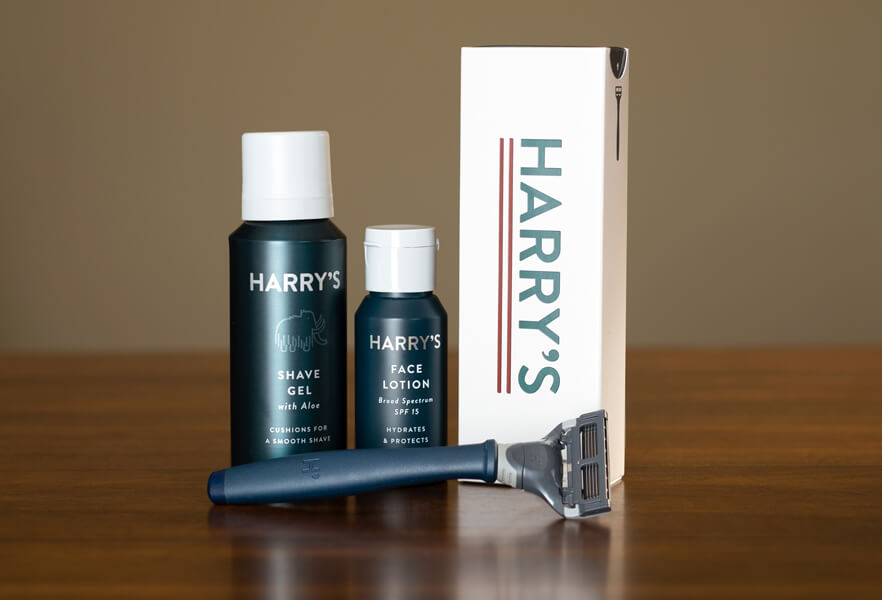
In recent years, disruptions have hit a number of types of consumer packaged goods, with new brands quickly taking over a share of the market. That happened in recent years with Chobani yogurt and a number of new brands of delivered disposable razors, such as Harry’s razors, shown here.
CREDIT: DAVE6163 / FLICKR
One of the central problems that researchers have faced is determining why people get attached to such inherently disposable and interchangeable goods. Tracking individual consumers’ buying behaviors for long enough to learn how their attachments are formed or discarded has always been impractical.
In the past, for example, it might have been possible to find household-level data for a couple of years, or at most a decade, Bronnenberg says. But that’s largely a limitation of tracking brick-and-mortar shopping. It’s not hard to imagine the Amazons of the future armed with precise histories of individual buying behaviors over decades — or a lifetime — in an increasingly e-commercialized world.
Will the mechanisms that historically led to brand attachment — whether they’re a product of heuristics, rooted in geography or passed down through families — survive as consumers do more and more of their restocking online rather than in-store? Or when people start deferring painkiller decisions to an AI-enabled health app and outsourcing bottled water replenishment entirely to a smart refrigerator?
A report by Cognizant states that while online sales represent only 5 percent of consumer packaged-goods business today, that could swell to 40 percent by 2025. It’s a shift that could spell doom for national and international brand names, says consumer branding expert Martin Lindstrom.
The next generation of consumers, he predicts, will have a very different relationship with brands.
“If you were among those kids who had Kellogg’s corn flakes on the breakfast table, drank a Coke from time to time, enjoyed your favorite Kit Kat, and, after you got a little older, have always used Tide, don’t expect the next generation to follow you,” Lindstrom wrote in a 2016 post titled “The End of Global Brands.”
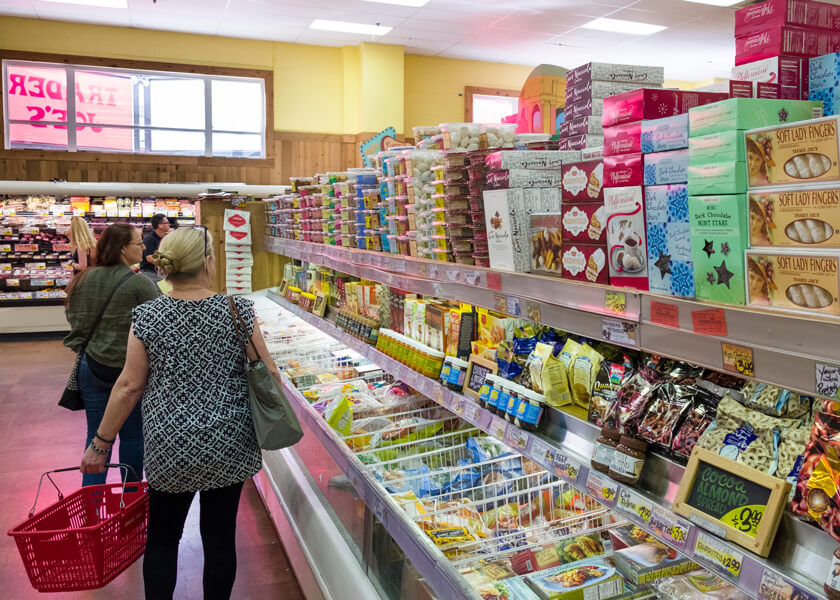
Generic house brands have a come a long way in the last few decades, and observers see even more growth on the horizon. Trader Joe’s market, shown here, embraces its house brand, giving consumers less choice, lower prices and few big-name brands. People flock to the stores.
CREDIT: DAVID L. MOORE - CA / ALAMY STOCK PHOTO
He believes that supermarkets will de-emphasize national or international brands in favor of private-label products and regional brands that can’t be found more cheaply on Amazon. “They can’t compete on price and volume — they need to compete on something more emotional,” he says, such as engaging with local communities or connecting with a consumer’s sense of purpose. For instance, with the increased transparency afforded by the Internet, an item’s production methods, carbon footprint and ingredients can all be scrutinized by increasingly environmentally conscious consumers.
“This doesn’t mean that the Coca-Colas of the world will vanish overnight, but we should expect to notice fewer new global brands appearing on store shelves in the future,” Lindstrom predicts. “We’ll notice thousands of highly local, previously unknown, seasonal, topical, customized brands appearing.”
What this all adds up to as the next generation of consumers form their brand preferences in an online world is unclear, for now. But it’s something that should keep another generation of researchers as busy as ever.




